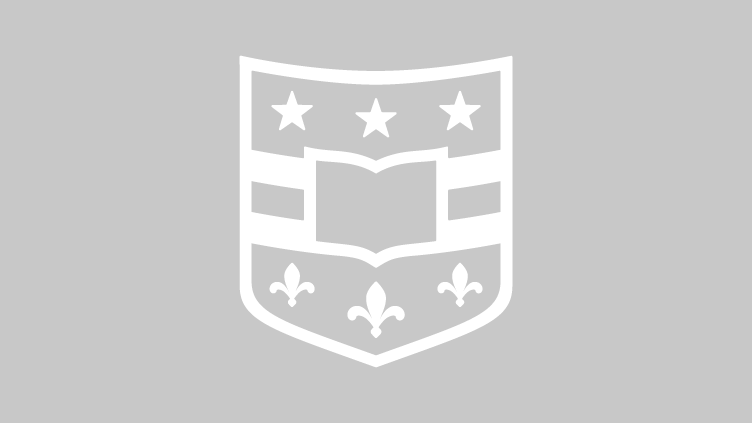Biologist discusses sacred nature of sustainability
GoodenoughThe hot topics of global warming and environmental sustainability are concerns that fit neatly within the precepts of religious naturalism, according to Ursula Goodenough, Ph.D., professor of biology in Arts & Sciences at Washington University in St. Louis. In addition to being a renowned cell biologist, Goodenough is a religious naturalist and the author of The Sacred Depths of Nature, a bestselling book on religious naturalism that was published in 1998. Religious naturalism neither requires belief in God nor excludes such faith. Rather, the movement is based on what Goodenough describes as “an exploration of the religious potential of nature.”
Readers build vivid mental simulations of narrative situations, brain scans suggest
A new brain-imaging study is shedding light on what it means to “get lost” in a good book — suggesting that readers create vivid mental simulations of the sounds, sights, tastes and movements described in a textual narrative while simultaneously activating brain regions used to process similar experiences in real life.
Technology identified could reduce the spread of rice virus
National Science FoundationBuilding on plant virus research started more than 20 years ago, a biologist at Washington University in St. Louis and his colleague at the Donald Danforth Plant Science Center in St. Louis have discovered a technology that reduces infection by the virus that causes Rice Tungro Disease, a serious limiting factor for rice production in Asia.
Computer scientist explains how to beat humans at checkers
SchaefferJonathan Schaeffer talks about playing checkers with a computer and the interplay between people and technology in his Assembly Series talk at 11 a.m. on Wed., Feb. 18 in Steinberg Hall Auditorium.
Larry Haskin honored with named crater on the moon
A crater on the moon has been named after the late Larry Haskin, Ph.D., who spent much of his career as a researcher in the WUSTL Department of Earth & Planetary Sciences.
Haskin honored with named feature on the Moon
HaskinA crater on the moon has been named after the late Larry Haskin, Ph.D., who spent much of his career as a WUSTL researcher in the Department of Earth & Planetary Sciences.
Novel technique changes lymph node biopsy procedure for breast cancer patients
David Kilper/WUSTL PhotoFor the first time, WUSTL scientists have used gold nanocages to map sentinel lymph nodes in a rat noninvasively using photoacoustic tomography.
Readers build vivid mental simulations of narrative situations, brain scans suggest
A new brain-imaging study is shedding light on what it means to “get lost” in a good book — suggesting that readers create vivid mental simulations of the sounds, sights, tastes and movements described in a textual narrative while simultaneously activating brain regions used to process similar experiences in real life.
Novel technique changes lymph node biopsy, reduces radiation exposure in breast cancer patients
David Kilper/WUSTL PhotoWUSTL biomedical engineers Younan Xia (left) and Lihong Wang examine the photoacoustic tomography machine (PAT) in Wang’s Whitaker Building laboratory.Information obtained from a new application of photoacoustic tomography (PAT) is worth its weight in gold to breast cancer patients. For the first time, Lihong Wang, Ph.D., Gene K. Beare Distinguished Professor in the Department of Biomedical Engineering, with a joint appointment in Radiology, and Younan Xia, Ph.D., James M. McKelvey Professor in Biomedical Engineering, with a joint appointment in chemistry in Arts & Sciences, both at Washington University in St. Louis, have used gold nanocages to map sentinel lymph nodes (SLN) in a rat noninvasively using PAT.
Plant polymerases IV and V are special forms of Polymerase II
It’s a little like finding out that Superman is actually Clark Kent. A team of biologists at Washington University in St. Louis has discovered that two vital cellular components, nuclear RNA Polymerases IV and V (Pol IV and V), found only in plants, are actually specialized forms of RNA Polymerase II, an essential enzyme of all eukaryotic organisms, including humans.
Older Stories
